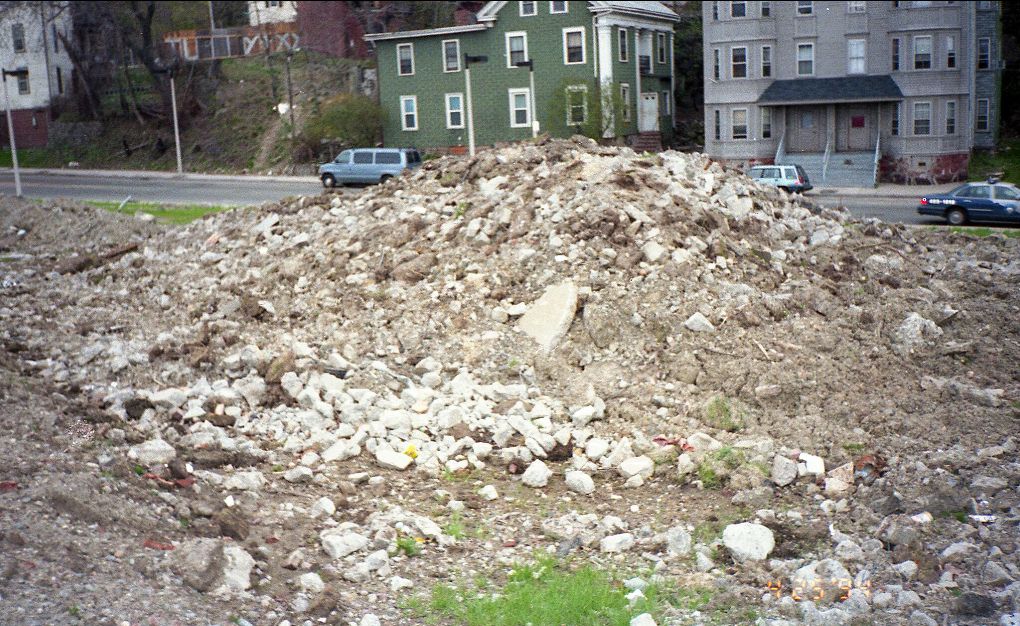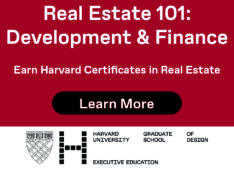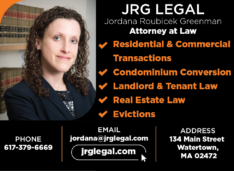Do You Own Some Small, Unbuildable, Taxable, Urban Land?
| . Posted in News - 0 Comments
By Eric Weld, MassLandlords, Inc.
If you own a tract of unbuildable land within city limits of a Massachusetts community and would like to lower your property taxes on that parcel, we have a proposition for you: donate a portion of your idle land for the purpose of creating an urban forest. In exchange, you could save hundreds or thousands off your annual tax bill.

Do you own a vacant lot in a Massachusetts city? We want to transform an unbuildable, vacant lot into an urban, fast-growing forest supported by a DCR Urban Community and Forestry Challenge Grant. CC BY-SA Mass DEP wikimedia commons.
To explain: We at MassLandlords are aspiring to apply for a grant, called the Urban and Community Forestry Challenge Grant, administered by the Massachusetts Department of Conservation and Recreation (DCR). These grants support local and regional projects that build communities’ trees, nature and forest capacities.
We are in the early stages of the process and taking steps to gauge interest within our association. We have not yet communicated with DCR about our proposal.
The Urban and Community Forestry Challenge grants are 50-50 matching grants. However, the match is 75-25 for grant-approved projects in environmental justice (EJ) communities.
EJ communities are pockets, frequently in urban areas, with high populations of minority and underrepresented people in which there is more concentrated poverty in comparison with other areas of the city or state. Typically, EJ neighborhoods are exposed to relatively unhealthy environmental conditions, such as poorer air quality and higher levels of pollutants. These conditions often lead to higher rates of health issues such as asthma, respiratory diseases and certain cancers. Other components of EJ areas include higher population density, lack of access to quality food and water, fewer trees, greenspaces and natural vegetation, closer proximity to environmental waste dumps and pollution-emitting facilities, higher concentration of concrete and built structures and lower exposure to sunlight.
More than 100 studies have shown that planting trees in EJ neighborhoods improves the region in surprising ways. Access to trees and greenspaces are associated with better health, lower crime, reduced average temperatures, increased investments and resulting economic opportunities.
Turning Loss into Gain
Meanwhile, some investors – and some of our members, we think – own parcels of land within EJ regions that may be partially or wholly unbuildable or have limited utility. Every city contains such plots, certainly including Worcester, Boston and Springfield. They might be unbuildable because they’re too small for local building codes. Maybe they are oddly shaped corner lots left over from larger building developments. Or they might be parts of flood plains, lack utilities access or be situated on slopes or land unsuitable for building.
Owners of such land are often left paying high urbanized tax rates while getting zero return on that portion of their investment. It’s a net loss year after year.
While such lots are useless for commercial or residential development, they might be ideal for supporting a small forest with native trees and plants. The DCR grants are designed with these types of lots in mind; small parcels of land that are of little use to the owners, difficult to sell, expensive to own, but that would bring incalculable benefit to the neighborhood when turned into greenspace.
We are seeking MassLandlords members, or other urban landowners, who might seek an escape from that onerous property tax bill by donating a chunk of land in an EJ neighborhood.
How Would it Work?
Specifically, we hope to find a landowner – or landowners – willing to donate a small parcel of land. An urban forest could be created on a piece of land as small as 20 square feet. For the intent of this project, we would prefer a parcel of at least a quarter acre. The parcel would ideally be a partially or wholly unbuildable lot, with open exposure to sunlight for hours each day.
We would assist with a donation of this land to a local or regionally based land conservation trust. The trust (to be decided at the time of donation) would take ownership of the parcel and oversee the creation of the forestry project, perhaps by enlisting a team of local students and volunteers who would benefit from it. The team would build the forest over three years, planting a diverse mix of fast-growing plants and trees. After that, the conservation trust would oversee maintenance of the forest.
We at MassLandlords, as grant recipients, would partner with the trust in managing the project. We would seek the assistance of plant and forestry experts for design and planting; as well as local horticulturists and silviculturists to advise on the removal of invasive vegetation and the planting of friendly, native forest species. We would also work with the assessor’s office in the city or town where the donation takes place to ensure that the land gift reduces the landlord’s real estate tax obligation. We would also ensure that a reduction in lot area will not adversely impact your right to own, operate or build on any associated land you choose to keep.
The grant would pay for land clearing and preparation, purchase of plants and trees, gardening tools and supplies and related costs for the portion you donate.
We see this exchange as a win-win. Donating landlords alleviate their tax burdens while providing a resource of long-term benefit to the local community.

The Christian Science Monitor profiled the Cambridge Miyawaki forest in Oct. 2023. The full video can be watched at https://youtu.be/CKcy0YAzeYU?si=PvSu6TiLai9EXvwK Editorial Use Video, Licensed 123rf Frame.
The Miyawaki Forest Method
We propose to create a Miyawaki forest because it’s an effective method for growing a rich, diverse forest efficiently and in a short time span.
Akira Miyawaki (1928 - 2021) was a Japanese botanist, ecologist and educator who became world-renowned for his expertise in restoring natural vegetation on degraded land. The Miyawaki method first prepares the intended forest space by removing invasive roots and growths from the soil to create an optimal growth environment for new plantings. The signature of the Miyawaki method is the identification of 20 - 30 diverse plant species that are native to the land in which they are planted. Such native plants are more resilient to potential land devastation and more likely to mature.
Miyawaki forests start with a dense initial planting of complementary species that allow and assist collective growth rather than competition.
Today there are more than 2,000 Miyawaki forests in existence. Some are in urban neighborhoods, some bordering industrial facilities. Many are several decades old. Miyawaki forests have been proven to grow and mature at a rate ten times faster than a natural forest – in as little as 30 years, as opposed to the 300 or more years conventional forests may take to develop.
A Miyawaki forest was recently planted in Cambridge, at 99 Sherman Street. The project was led by Maya Dutta, assistant director of regenerative projects at the Cambridge nonprofit Biodiversity for a Livable Climate. View a video of the project.
There are other types of urban forests, but we consider the Miyawaki forest method to be the fastest, most efficient approach to bringing aesthetic, health and economic improvements to the urban landscape.
The Miyawaki method would likely be more prevalent worldwide were it not for the steep upfront costs for numerous plantings and trees, and thorough soil preparation. The DCR grant, coupled with a land donation, would give us the opportunity to pursue this high-quality land use.
DCR Urban Forestry Challenge Grant Timeline
We are beginning now to gauge and build interest, and assess resources for this project. Depending on interest and resources, we may select several small plots (likely between one and 10) for forest planting.
Urban and Community Forestry Challenge Grant proposals for next year are due Nov. 1, 2024. Grant approvals take four to six months after the application deadline. Changes to the property deed would take place no sooner than 2025.
The DCR grant is funded through the USDA Forestry Program with earmarked funds from the Inflation Reduction Act. The USDA allotted more than $1 billion to all 50 states to support programs promoting planting and increasing access to trees in urban areas. In 2022, 385 projects received grant funding from the national program.
Why Does MassLandlords Want to Plant Trees?
MassLandlords is about creating better housing for all in Massachusetts. Remember our tagline reads, “Better Communities. Better Policy. Better Lives.” We’re pleased to have an opportunity to work on the “Better Communities” and “Better Lives” parts.
Housing is about more than just houses. It’s about quality of life, access to education, healthy food, clean air and water and connection to nature and local ecology. Even if you are inclined to be cynical, you can still participate and think of this as good public relations for landlords (while possibly saving money in the deal).
Applying for a grant to fund contained forestry projects in environmental justice neighborhoods answers all our goals. This grant would be a natural continuation of our ongoing mission.
If you or someone you know owns a parcel of partially or wholly unbuildable land in an urban area, and would like to be included in our planning, please contact us via email to hello@masslandlords.com, dquattrochi@masslandlords.com, or eweld@masslandlords.com.
Shave your tax bill by donating part of your idle lot for the purpose of creating an urban forest.
Learn how the new Massachusetts Urban Conservancy is reducing property owner expenses and giving back to the community.




